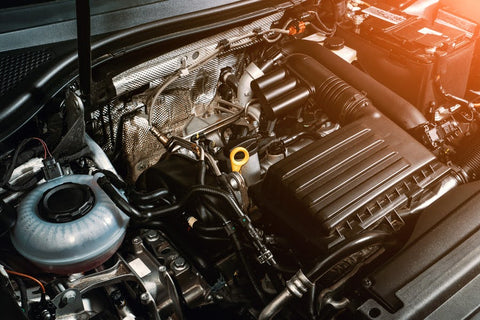Turbochargers emerged as important devices, altering the performance and economy of petrol engines. Amidst the various upgrades available, integrating a turbocharger in petrol engine seems very attractive. Our exploration can offer knowledge to both seasoned gearheads and cautious newcomers alike.
This article explores petrol turbo engines in immense detail. Discussing everything from what a turbocharger is and how it operates to different turbocharger applications and maintenance.
Turbocharger in Petrol Engine
A turbocharger breathes new life into your engine. But how turbocharger works in petrol engine? While "breathing new life" might be a symbolic stance, those familiar with turbochargers and how they work know that this statement has a technical element.
Essentially, turbochargers work as air pumps that blow compressed air into the engine, increasing the engine's output. While this is a general overview of the turbocharger functionality, things get more complicated in turbocharged petrol engines.

Source: shutterstock.com / Photo Contributor: DedMityay
Components and their functions
The turbocharger comprises several key components, each vital in enhancing engine performance. The main parts include the turbine, compressor, and wastegate.
The turbine harnesses energy from exhaust gases to spin the compressor. The compressor then forces air into the engine's cylinders, significantly increasing the density of the air-fuel mixture. Moreover, the wastegate is crucial in controlling the turbocharger's speed and preventing damage due to excessive pressure.
Applications of Turbochargers in Petrol Engines
The first thing we should disclose about petrol engines is that, unlike diesel engines, they have lower pressure within their combustion engine. The reason behind this is the nature of petrol fuels ignite more easily and burn hotter than diesel.
Due to such reasons, petrol engines are made smaller, and their components are lighter to ensure the engine runs on a wider and higher RPM band. The main goal of turbochargers in petrol engines is to increase the pressure in the combustion chamber, which increases engine power.
Besides having a higher RPM, petrol turbos for sale also come with a more compact size. However, the size of a turbocharger is determined by the engine's requirements and design.
Why turbocharger is not used in petrol engine?
When discussing turbochargers and petrol engines, we must note that these are more used in diesel engines and not in petrol variants. Yet, they might be common in performance and efficiency-focused vehicles. One of the main reasons for this is that petrol is generally more combustible than diesel, and combustion may also occur at lower pressure levels.
Additionally, as we explained earlier, parts in petrol engines are made lighter, and these are less likely to withstand the rise of pressure caused by the turbocharger. The rise of pressure in the engine cylinder can cause other problems, such as engine knocking. Due to such reasons, turbochargers are not a popular choice for petrol engines.
Turbocharged petrol car brands
While turbocharged petrol engines might not be a standard in the US, they are applied more in other parts of the world, such as India. You might be surprised to learn that popular brands such as Nissan and Citroen feature models with a petrol turbocharger in their collection.
However, you are less likely to find turbo petrol engines in models offered by big-name companies such as Ford and Honda.
Maintenance and Care for Turbocharged Petrol Engines
Maintaining a turbocharged petrol engine requires more attention than a non-turbocharged one. Regular oil changes are crucial, as the turbocharger relies on oil for lubrication and cooling.
So, changing your oil every 5,000 miles is a good practice for preventing wear and ensuring optimal turbocharger performance. For more precise guidelines, we advise consulting with a manual.
Similarly, ensuring the air filter is clean and in good condition is vital for optimal performance. Common issues with turbocharged engines include turbo lag and wear due to high temperatures. Yet, these can be effectively managed with proper care and maintenance.
Another thing you should know is that while having one might sound exciting, aggressive driving will likely take a toll on your vehicle. We advise on driving safely and avoiding being overly aggressive with the accelerator.

Source: shutterstock.com / Photo Contributor: Setta Sornnoi
Conclusion
When offering a comprehensive overview of the role of turbocharger in petrol engines, it's important to highlight that this type of enhancement is more common in diesel engines than in petrol. So, if you need high-quality diesel parts, we can find the parts you require without waiting.
However, while not as common, petrol turbos are still present in the global automotive scene and available in models from famous brands such as Nissan and Citroen.



